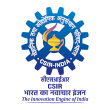Development and Promotion of Non-POPs Alternatives to DDT





In spite of DDT’s successful use to control vector borne diseases (VBDs), its widespread use has resulted in the contamination of the environment. The adverse effects of DDT and other organochlorine pesticides were first brought to the public by Rachel Carson through her famous book “The silent spring” in 1962. DDT causes impaired calcium metabolism among other adverse effects such as endocrine disruption, reproductive disorders, etc (Rogan and Chen, 2005). During this time, the environmental and ecotoxicological effects of DDT have been reported and several countries especially, USA and Europe have restricted/banned the use of DDT in agriculture (Rogan and Chen, 2005). Extensive use of DDT has also resulted in the development of resistance by various pests and vectors (Van den, 2009, Dash et al., 2008). India banned the use of DDT in agriculture in 1989; however, as per the recommendation of the World Health Organization (WHO), DDT is continued to be used for IRS in malaria control as it is more effective in the control of vectors. Several countries have stopped manufacturing DDT due to their obligation to Stockholm Convention. These countries have successfully adopted alternative insecticides (such as organophosphorus and synthetic pyrethroids)/methods/strategies of vector control instead of DDT. Currently DDT is manufactured only in India by HIL (India) Ltd (Formerly M/s Hindustan Insecticides Ltd), a public sector undertaking of Govt. of India. HIL (India) Ltd also exports DDT to a few African countries for use in public health purposes (HIL, Website).
Larval control using neem-derived products offers a sustainable additional tool for malaria vector control. The efficacy of neem seed extracts has shown to degrade under exposure to sunlight within seven days and thus the toxicity is non-persistent in the environment. This not only provides environmental benefits but also means that regular applications of neem seed extracts would be required to maintain efficacy. Neem oil has good larvicidal properties for anophelines and suppresses successful adult emergence at very low concentrations.
Government of India (GoI) signed the Stockholm Convention (SC) on persistent organic pollutants (POPs) on 14 May 2002 and ratified it on 13th January 2006. India has submitted its action plan for the management of these POPs in the form of National Implementation Plan (NIP) to the Secretariat of the Stockholm convention on 21st April 2011 (MoEFCC, 2011). As per the long-term action plan of India, the development and promotion of non-POPs alternatives to DDT is one of the top priorities.
For more information visit: https://chm.pops.int/Implementation/NationalImplementationPlans